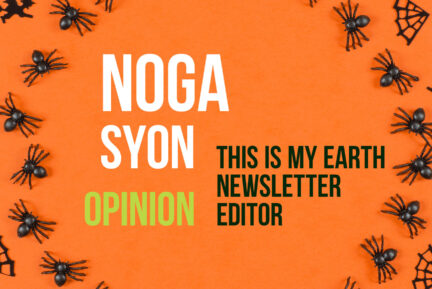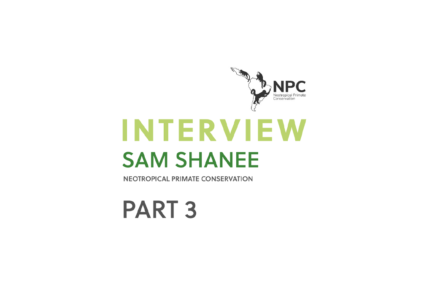Fear and Loathing

If someone were to observe me when I visited the Natural History Museum in Vienna, they may have been baffled by my behavior. The exhibit rooms are arranged by taxonomy in a half-circle, such that you can enter from one side and exit from the other. My route, however, was not direct. I entered from one side of the crescent, turned around in the middle, then re-entered the exhibit via the exit, and again turned around in the middle. To understand my behavior, you need to know that the middle room, which I avoided at all costs, contained the spider display. Some of you may be rolling your eyes or sighing at this point, but please bear with me.
Arachnophobia, or the acute fear of spiders, is very common—but its causes are not very clear. Some suggest cultural influences, but many things are considered scary culturally that do not induce an uncontrollable, primal reaction of terror. Evolutionary explanations suggest that it is an instinctive fear, triggered by the danger posed by some species, but being told that most spiders are harmless to humans does not help me nor most arachnophobes. I even find seeing photos and paintings of spiders unbearable, and upon entering the Natural History Museum, my first objective was to find out where the spiders are, to avoid seeing even a glimpse. It is not a conscious fear, stemming from cognition: it is an amygdala-triggered, primal reaction that arises beyond control, beyond reason.
Several scientists (and fellow arachnophobes) agree with me that there is something about how spiders look that we find terrifying. According to Jon May, a professor of psychology at Plymouth University, what induces fear of spiders is the combination of the angular, long legs, the dark colors, and the unpredictable movements — all factors known to cause aversion in most people.
Some people, on the other hand, find those very properties of spiders beautiful. “I see spiders as incredibly esthetic — nature’s masterpiece,” Uri Shanas, TiME’s founder, told me. “They are incredibly symmetrical, and I find their movement is beautiful to watch. Each species has its own unique form of movement.” Professor Shanas is not a spider expert, but he gained worldwide recognition for documenting the species Cerbalus aravaensis, an endemic spider to the Arava Valley in Israel and Jordan, and the largest spider in the Middle East. I shrink in my chair as we talk: all the things he admires about spiders are the very things that terrify me to my core, and the thought of the Middle East’s largest spider living only a three hours’ drive from me is one I prefer to repress.
Spider—Man
While it may come as a surprise to some, the word “spider” is not derived from “horrible, hairy, terrifying demon,” but from a Proto-Germanic word meaning “to spin.” The Greek word used in the scientific term, Arachne, has a more sinister source.
Arachne was a Lydian woman who boasted spectacular weaving skills. Her works were so magnificent that mortals, gods, and nymphs from all over the land came to see her work; eventually, the goddess Minerva, furious with Arachne’s refusal to admit that her talent was a gift from the goddess, challenged her to a weaving contest. Minerva was so angered at Arachne’s success that she hit her with the spindle; Arachne hung herself from a rope. Taking pity on her, Minerva revived her but turned her into a spider, promising her that she and her offspring will forever weave and live on ropes. And that is the story of how spiders came to be — at least according to the Roman poet Ovid’s retelling of the Greek myth.
And so begins a complex relationship between humans and spiders, one that extends through centuries and cultures. In Cameroon, some cultures analyze spider movement as a form of divination; and many cultures speak of a trickster spider-person, such as the Lakota people and their Iktómi. The dream catcher, a hoop with woven ropes made popular in the 1960s, was originally believed by the Ojibwe people to be a gift from the spider woman Asibikaashi. In Italy, the tarantella dance was inspired by the belief that the bite of a local spider could trigger a disease causing frantic movements. And in modern fiction and art, spiders — and especially giant ones — are often featured as frightening figures; remember them in Lord of the Rings and Harry Potter?
Close Encounters
Fear of animals is quite common, and spiders are indeed one of the most prevalent objects; another common phobia is of snakes. Snakes are in many respects the visual opposite of spiders, being smooth and straight. But they are also extremely different than humans, with respect to their body and their movement. Both animals have been linked in the Western civilization to human behavior that angered gods; while the Greek goddess Minerva’s rage at Arachne led her to bestow upon the poor woman four additional limbs, the biblical serpent was punished for tempting Eve by losing all its limbs.
The thought of a human spirit trapped within this deformed body, or the thought of life, sentience, and awareness behind such shapes, is indeed scary. It is not a coincidence that science fiction movies choose to display alien bodies as similar to ours when the viewer is supposed to sympathize with the alien, and a strange, often spider-like body, when we are supposed to fear them. The idea of life so different than ours is terrifying. It makes us ask what our position is in the universe. In what way is human life central, important, meaningful?
Just think about it: there are more species of beetle than all other animal species. Combined! When I learned this fact, I found myself feeling the very same way I feel when staring at the night’s sky: small, insignificant, in awe. Could it be the fear of sentience in physical forms so extremely foreign to us that explains the fear of spiders? Could it be that what we are afraid of is the magnitude of life forms, the idea of life so extremely different from our own, which we can never truly understand but are still forced to share this world with? In other words, are we afraid of biodiversity?
I think that the answer is at least partly positive. While most of us in TiME adore and enjoy the beauty of many types of life forms, this admiration is not shared by everyone. And even among the people who appreciate it, there are sometimes remnants of primal, xenophobic fear of what is different.
Did I learn to stop worrying and love the bomb?
What do we do, then? How do we work as conservationists if many people have an innate, perhaps unconscious fear of certain life forms around the world? In 2011, environmental groups fought an attempt to mine in the Samar sands, home to the Cerbalus aravaensis. “We tried to use it as a flagship species for the conservation campaign,” says Professor Shanas. “But it does not work. People do not like them.” Are some species doomed because people do not like them?
To answer optimistically to that pessimistic question, we can argue that conservation efforts have already borne fruit. Thanks to you, TiME has already saved many threatened species around the world. But more importantly, fear does not have to define us. One can live her entire life with a crippling fear of spiders, and yet sit down to write this article (although with the image display option of her browser turned off, and following months of therapy). We can always grow to empathize with, or at least better understand, what scares us.
“The Cerbalus aravaensis builds itself a door in the sand,” Professor Shanas told me. “It builds a tunnel in the sand and layers it with cobwebs to prevent it from collapsing. Then it weaves itself a door, and camouflages it with more sand.” I try to think of this creature, which I view as a terrible monster, as a frightened little animal that builds itself a home to hide from the dangers outside and the hot desert wind. I try to think about the little jumping spiders, known for their magnificent courtship dances. I try to think about spider silk, five times stronger than steel, comprised of thousands of nanostrands and able to stop a Boeing 747 if scaled to the width of a pencil. I try to think about spiders as fellow creatures that share this world with me. I try to think about spiders “ballooning,” traveling long distances across land and sea holding on to silk threads.
And I try to think about how spiders are often the stabilizers of the invertebrate population, and how important they are to the life that surround us. Although my life would be seemingly easier if they did not exist, the disappearance of spiders could have significant consequences for the entire ecosystem. Spiders are found in almost every habitat, including the most northern islands of the Arctic and the highest altitudes that support life. The amount of insects they consume is enormous — estimated between 400 million and 800 million tons worldwide, annually. This means that not only do they help us fight disease-transmitting insects, such as mosquitoes, but they also regulate and stabilize the global insect population. Since “our planet is essentially a planet of insects,” as Dave Goulson told TiME in an interview about their importance, spiders have a huge impact on the ecosystem overall. Once again this reminds us that just like the pattern of the cobweb or an elaborate piece of lace, it is often the tiniest nodes, the less-attractive connections, that hold the entire structure of the ecological system together.
I will never like spiders, but I can appreciate them and their importance to our delicate ecosystem. And I do not need to like spiders in order to recognize that we share this planet with them, and as such, we must continue to preserve their habitats and allow them to go on with their strange (and terrifying) lives. Some people will never love nature. It does not mean they cannot care.

References
Britannica, The Editors of Encyclopaedia. “tarantula”. Encyclopedia Britannica, 25 Jan. 2024, https://www.britannica.com/animal/tarantula
de Jong, Peter and Peter Muris. “Spider phobia: Interaction of disgust and perceived likelihood of involuntary physical contact”. Journal of Anxiety Disorders 16:1 (2002): 51-65.
Diaz, James H. “The global epidemiology, syndromic classification, management, and prevention of spider bites”. American Journal of Tropical Medicine and Hygiene 71:2 (August 2004): 239-250.
Gray, Mike. “Spiders are everywhere”. Australian Museum. November 25, 2018. https://australian.museum/learn/animals/spiders/spiders-are-everywhere/
Landová, Eva, et al. “Toward a reliable detection of arachnophobia: subjective, behavioral, and neurophysiological measures of fear response”. Frontiers in Psychiatry 14 (June 2023).
Miceli, Courtney. “Spider silk is five times stronger than steel—now, scientists know why”. Science. 20 November, 2018. https://www.science.org/content/article/spider-silk-five-times-stronger-steel-now-scientists-know-why
Nyffeler, Martin and Birkhofer, Klaus. “An estimated 400-800 million tons of prey are annually killed by the global spider community”. Naturwissenschaften 104:3 (2017): 30.
Ortona, Guido. “Xenophobia is really that: a (rational) fear of the stranger”. Mind & Society 16 (June 2016): 37-49.
Riechert, Susan E. “Thoughts on the Ecological Significance of Spiders”. BioScience 24:6 (June 1974): 352-356.
Sanders, Dirk et al. “Individual and species-specific traits explain niche size and functional role in spiders as generalist predators”. Journal of Animal Ecology 84 (2015): 134-142.
Zeitlyn, David. “Spiders in and out of Court or ‘the long legs of the law.’ Styles of spider divination in their sociological contexts”. Africa 63 (1993): 219-240





























































































